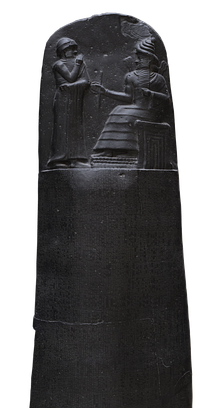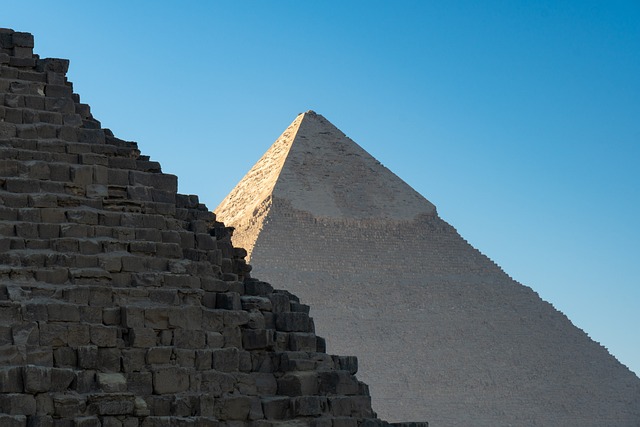The Persian Empire: A Saga of Rise, Expansion, and Fall
The Persian Empire stands as one of the most significant civilizations in ancient history, renowned for its expansive territory, formidable leadership, and enduring legacy. Led by visionary rulers such as Cyrus the Great and Darius the Great, the Persian Empire left an indelible mark on the world, shaping the course of history for centuries to come. From its humble beginnings to its eventual decline, the story of the Persian Empire is a captivating tale of ambition, conquest, and the complexities of governance.
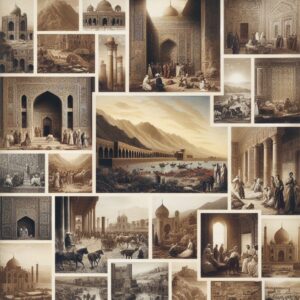
The Rise of the Persian Empire: Cyrus the Great and the Birth of an Empire
The annals of ancient history are replete with tales of conquest, empires rising and falling, and the indomitable spirit of ambitious rulers shaping the destiny of nations. Among these narratives stands the saga of the Persian Empire, a monumental testament to the vision and prowess of one of history’s most illustrious figures: Cyrus the Great.
Context of Turmoil:
The 6th century BCE was a period of profound upheaval in the ancient Near East. The once-mighty empires of Mesopotamia and Anatolia were in flux, with power dynamics shifting and regional powers vying for dominance. It was against this backdrop of uncertainty and turmoil that Cyrus emerged as a beacon of hope and ambition, destined to leave an indelible mark on the annals of history.
The Rise of Cyrus the Great:
In the year 550 BCE, Cyrus ascended to the throne of Persia, inheriting a realm fraught with internal discord and external threats. Yet, far from being daunted by the challenges that lay ahead, Cyrus saw in them an opportunity for greatness. Endowed with a keen intellect, charismatic charm, and a strategic acumen unparalleled in his time, Cyrus embarked on a campaign of conquest that would alter the course of history.
The Conquests of Cyrus:
Cyrus’s military campaigns were nothing short of legendary, marked by a potent combination of military prowess and diplomatic finesse. His first target was the mighty Median Empire, ruled by King Astyages. In a series of audacious maneuvers and tactical brilliance, Cyrus overthrew the Median monarch and established himself as the undisputed ruler of Persia.
Buoyed by his initial successes, Cyrus set his sights on further conquests, casting his gaze towards the rich and fertile lands of Anatolia. The kingdom of Lydia, ruled by the enigmatic Croesus, soon fell to the inexorable advance of Cyrus’s armies, adding further luster to his burgeoning empire.
However, it was Cyrus’s conquest of Babylon in 539 BCE that truly cemented his status as one of history’s greatest conquerors. The fall of Babylon, a city of unparalleled wealth and splendor, marked the culmination of Cyrus’s ambitions and the zenith of Persian power.
The Legacy of Cyrus:
Central to Cyrus’s success was his policy of tolerance and benevolence towards the peoples he conquered. Unlike many conquerors of his time, Cyrus did not seek to impose his will through brute force or coercion. Instead, he adopted a policy of respect for local customs, traditions, and religious beliefs, winning the admiration and loyalty of his subjects in the process.
This spirit of inclusivity and magnanimity would become the hallmark of Persian rule, laying the foundations for an empire characterized by cultural diversity and religious pluralism. Indeed, Cyrus’s famous Cylinder, discovered in modern-day Iraq, stands as a testament to his commitment to religious freedom and human rights, earning him a place of honor in the annals of history.
Conclusion:
In the grand tapestry of human history, few figures loom as large as Cyrus the Great and the Persian Empire he founded. Through his vision, courage, and indomitable spirit, Cyrus transformed a fledgling kingdom into a sprawling empire that spanned continents and endured for centuries. His legacy, etched in the annals of time, serves as a timeless reminder of the boundless potential of human ambition and the enduring power of leadership to shape the destiny of nations.
The Expansion and Administration of the Persian Empire: Darius the Great and the Golden Age of Imperial Governance
In the annals of ancient history, few empires rival the grandeur and sophistication of the Persian Empire at its zenith. Under the visionary leadership of rulers like Darius the Great, the Persian Empire expanded to unprecedented heights, stretching from the Aegean Sea in the west to the Indus River in the east. However, it was not merely through military conquest that the Persian Empire achieved its greatness. Rather, it was the meticulous administrative reforms implemented by leaders like Darius that transformed Persia into a model of imperial governance and cultural diversity.
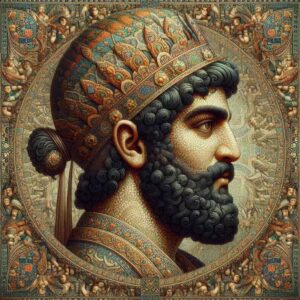
The Vision of Darius:
Darius ascended to the throne of Persia in the wake of Cyrus the Great and his successor Cambyses II. As the inheritor of a vast and diverse empire, Darius faced the daunting task of consolidating Persian power and ensuring the stability and prosperity of his realm. To achieve these objectives, Darius embarked on a series of far-reaching reforms that would leave an indelible mark on the fabric of Persian society.
The Royal Road and Economic Integration:
Central to Darius’s vision was the establishment of a comprehensive infrastructure network that would facilitate communication, trade, and administrative efficiency across the empire. The crowning achievement of this endeavor was the construction of the Royal Road, a vast network of well-maintained highways that connected the far-flung corners of the Persian Empire. Stretching over 1,600 miles from Sardis in Anatolia to Susa in Persia, the Royal Road served as the lifeline of the empire, enabling the swift movement of goods, troops, and information.
In addition to the Royal Road, Darius implemented a standardized system of weights, measures, and coinage, further enhancing economic integration and facilitating trade within the empire. By establishing a common currency and uniform standards of measurement, Darius laid the groundwork for a thriving commercial economy that fostered prosperity and stability throughout Persia.
Administrative Reforms and Decentralized Governance:
Perhaps Darius’s most enduring legacy lies in his efforts to reform the administrative apparatus of the Persian Empire. Recognizing the immense diversity of the empire’s territories and peoples, Darius instituted a system of decentralized governance that allowed for the efficient administration of the empire’s vast domains while accommodating local customs and traditions.
At the heart of Darius’s administrative reforms was the division of the empire into distinct administrative provinces, each governed by a satrap appointed by the central authority. These satraps, or provincial governors, wielded considerable authority within their respective territories, overseeing taxation, law enforcement, and infrastructure development. However, they were also held accountable to the central government and subject to regular audits and inspections to ensure compliance with imperial law.
Cultural Diversity and Religious Tolerance:
In addition to his administrative reforms, Darius was also known for his commitment to cultural diversity and religious tolerance within the empire. Unlike many empires of antiquity, which sought to impose their cultural and religious norms on subject peoples, Darius embraced the diversity of his realm and encouraged the free expression of religious beliefs and customs.
This spirit of tolerance and inclusivity fostered a climate of religious and cultural exchange that enriched the fabric of Persian society and contributed to the empire’s enduring stability and prosperity.
Conclusion:
In the grand tapestry of human history, few empires shine as brightly as the Persian Empire under the enlightened rule of Darius the Great. Through his visionary leadership and far-reaching reforms, Darius transformed Persia into a beacon of civilization and a testament to the enduring power of inclusive governance and cultural diversity. Though the Persian Empire would eventually succumb to the tides of history, its legacy of innovation, tolerance, and administrative excellence would endure for centuries to come, shaping the course of world history and inspiring future generations to strive for greatness.
The Decline and Fall of the Persian Empire: Confronting Alexander the Great and the End of an Era
The story of the Persian Empire is not only one of triumph and glory but also of eventual decline and fall. Despite its remarkable achievements and enduring legacy, the Persian Empire would ultimately succumb to the relentless march of history, facing formidable adversaries and internal challenges that would hasten its demise.
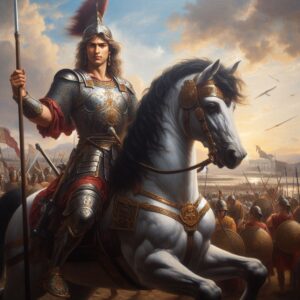
The Challenge of Alexander the Great:
In the 4th century BCE, the Persian Empire faced perhaps its greatest challenge in the form of Alexander the Great, the young Macedonian conqueror whose military genius and ambition knew no bounds. In 334 BCE, Alexander launched his audacious invasion of the Persian heartland, embarking on a campaign of conquest that would ultimately prove fatal to Persian hegemony.
With unparalleled speed and strategic acumen, Alexander’s army swept through Asia Minor, Egypt, and Mesopotamia, laying waste to all who dared to oppose him. Despite valiant resistance from Persian forces, including the famous Battle of Gaugamela in 331 BCE, where the Persian King Darius III marshaled his troops against the Macedonian phalanx, the empire could not withstand the might of Alexander’s relentless advance.
The Fall of Darius III and the End of Persian Resistance:
The death of Darius III in 330 BCE marked a decisive turning point in the struggle between Persia and Macedonia. With the fall of their charismatic king, Persian resistance crumbled, and the once-mighty empire teetered on the brink of collapse. Within a few short years, Alexander’s army had swept across the length and breadth of the Persian Empire, laying waste to its cities, plundering its riches, and extinguishing the flames of Persian sovereignty.
Legacy and Influence:
Despite its fall, the Persian Empire left an indelible mark on the course of world history. Its legacy, far from being consigned to the annals of antiquity, would continue to shape the development of art, literature, and philosophy across the ancient world and beyond. The Persian Empire’s cultural and intellectual contributions, from the poetry of Rumi to the architectural wonders of Persepolis, endure as a testament to the enduring power of human creativity and ingenuity.
Conclusion:
In the final analysis, the rise, expansion, and fall of the Persian Empire stand as a testament to the complex interplay of human ambition, power, and the inexorable march of history. From its humble beginnings under Cyrus the Great to its eventual demise at the hands of Alexander the Great, the Persian Empire’s story is one of triumph and tragedy, of grandeur and decline.
Yet, even in its twilight years, the Persian Empire remains a beacon of inspiration and enlightenment, reminding us of the enduring power of human achievement and the transformative impact of civilizations on the course of world history. As we reflect on the legacy of the Persian Empire, we are reminded of the fragility of power and the impermanence of empires, yet also of the enduring spirit of resilience and innovation that continues to shape the world we inhabit today.

